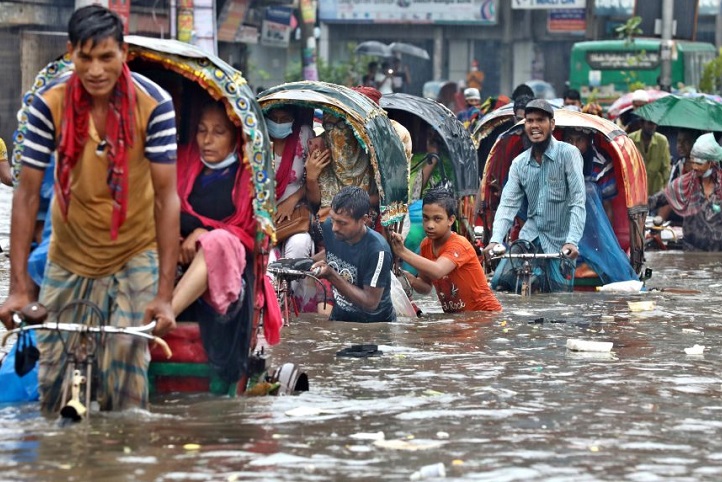11 Dec 2024

Tired Earth
By The Editorial Board

There are limits to the capacity of humans to adapt to the most severe impacts of global warming, scientists have warned in a recent study, saying the more we approach 1.5°C or 2.0°C of warming above pre-industrial temperatures, the harder it will be to adapt.
The Earth is currently on track to warm by around 2.5°C compared to pre-industrial levels by the century’s end, the United Nation’s climate change organisation said in a recent report, warning that the world is failing to act with sufficient urgency to curb greenhouse gas emissions.
And while humans have the capacity to adapt, the warmer the planet will become, the more intolerable the impacts of climate change on people and ecosystems will be, scientists warn.
“Without reducing greenhouse gas emissions, essentially all of these things fall apart,” scientist Lisa Schipper, one of the authors of the report, told EURACTIV. “Adaptation isn’t something that we can just do unless we also reduce greenhouse gas emissions”.
The study, published on Thursday (10 November), presents key insights from the latest climate research this year and offers policy guidance on how to address it.
The limits to adaptation can be ‘soft’ or ‘hard’, Schipper explains.
While ‘soft’ limits are dynamic and can be addressed through finance and education, ‘hard’ limits are not flexible and refer to situations in which adaptive action to avoid risks is no longer possible – for example extreme heat unbearable for the human body or rising sea levels submerging coastal communities.
Schipper warns that hard limits need to be taken “very seriously” because exceeding them can lead to irreversible losses.
“Certain ecosystems will simply not be able to function after they hit 1.5 or beyond. And, of course, that has implications not just for the ecosystems, but for human life on the planet,” she explained.
Limits to adaptation particularly affect vulnerable groups in low-income regions, where adaptation efforts are typically insufficient to tackle climate impacts and investments in adaptation reflect underlying inequalities, the study points out.
“The way that a lot of adaptation interventions currently are carried out is not robust enough, and we tend to not include most marginalised communities in a lot of planning,” Schipper told EURACTIV.
Structural inequalities
At the moment, approximately 1.6 billion people live in ‘vulnerability hotspots’ – regions most at risk from being affected by climate disasters. And their numbers is projected to double by 2050, according to the study.
In these areas, which include parts of Central America, Asia and the Middle East, as well as Africa from the Sahel region to the East coast, climate-driven mortality is 15 times higher than in the least vulnerable countries, the study shows.
Pre-existing inequalities in those regions mean people there are more exposed to the damages caused by climate change, with the worst impacts felt in places stricken by systemic poverty, forced migration, inequality and state fragility.
Moreover, marginalised groups such as religious minorities, women, children and elderly people in some regions are cut off from the planning process, Schipper explains. “They are already facing these structural barriers to decision-making, so often they won’t be part of the decision-making around things that affect them.”
This can lead to a vicious circle. “As things become more difficult, they become even more marginalised because they’re not able to be part of the decision-making process,” she added.
The role of private finance
When it comes to finance, the report suggests strengthening measures, such as “carbon prices and taxes” to support adaptation measures and low-carbon solutions.
“We need to have very integrated thinking and we need to have the different disciplines contributing,” she explains.
“That’s partly why it’s so hard for us to actually have an effective climate policy, because all of these other dimensions need to be considered at the same time,” she said.
Source : euractiv.com
Comment